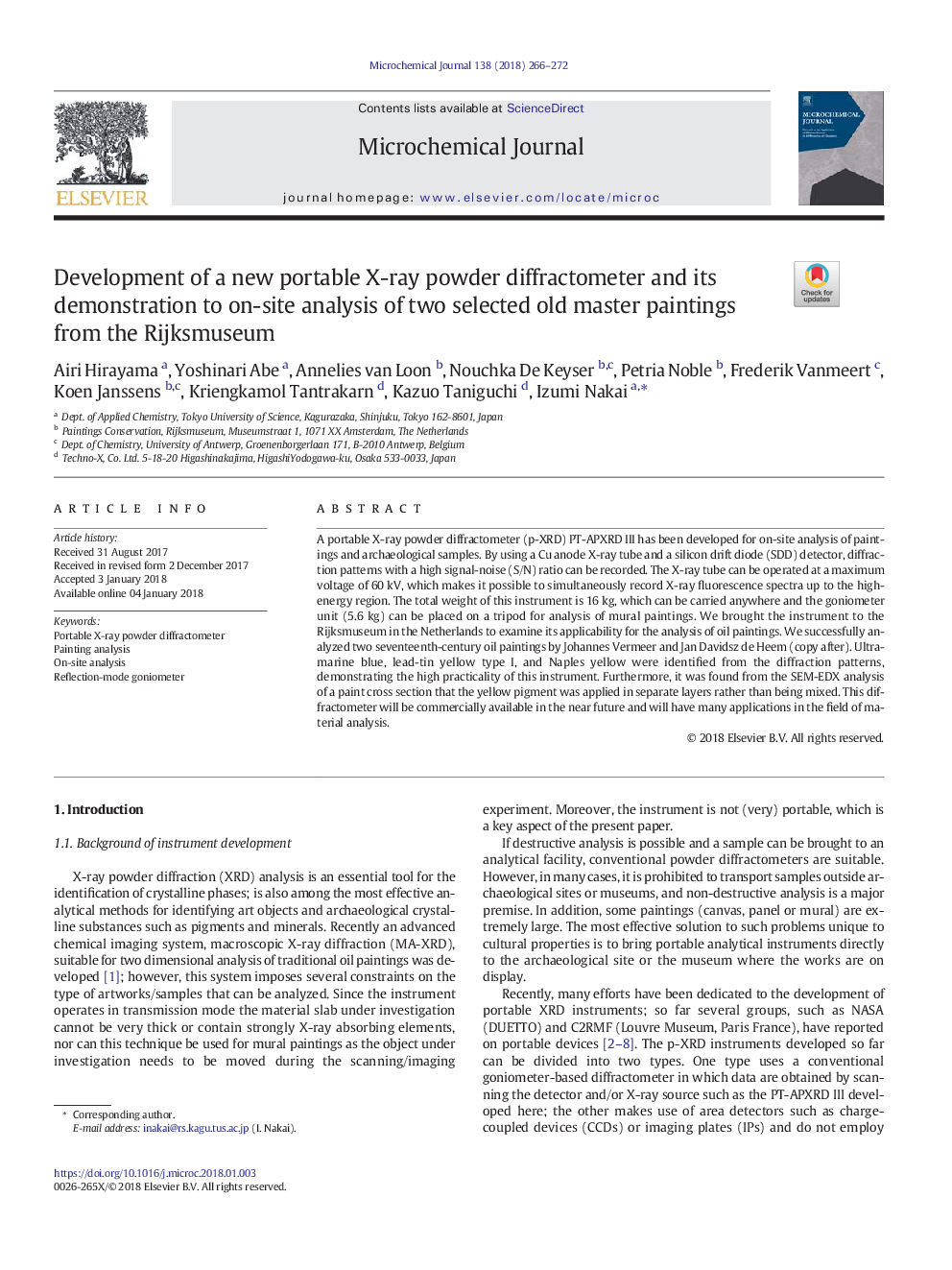| Article ID | Journal | Published Year | Pages | File Type |
|---|---|---|---|---|
| 7640973 | Microchemical Journal | 2018 | 7 Pages |
Abstract
A portable X-ray powder diffractometer (p-XRD) PT-APXRD III has been developed for on-site analysis of paintings and archaeological samples. By using a Cu anode X-ray tube and a silicon drift diode (SDD) detector, diffraction patterns with a high signal-noise (S/N) ratio can be recorded. The X-ray tube can be operated at a maximum voltage of 60Â kV, which makes it possible to simultaneously record X-ray fluorescence spectra up to the high-energy region. The total weight of this instrument is 16Â kg, which can be carried anywhere and the goniometer unit (5.6Â kg) can be placed on a tripod for analysis of mural paintings. We brought the instrument to the Rijksmuseum in the Netherlands to examine its applicability for the analysis of oil paintings. We successfully analyzed two seventeenth-century oil paintings by Johannes Vermeer and Jan Davidsz de Heem (copy after). Ultramarine blue, lead-tin yellow type I, and Naples yellow were identified from the diffraction patterns, demonstrating the high practicality of this instrument. Furthermore, it was found from the SEM-EDX analysis of a paint cross section that the yellow pigment was applied in separate layers rather than being mixed. This diffractometer will be commercially available in the near future and will have many applications in the field of material analysis.
Keywords
Related Topics
Physical Sciences and Engineering
Chemistry
Analytical Chemistry
Authors
Airi Hirayama, Yoshinari Abe, Annelies van Loon, Nouchka De Keyser, Petria Noble, Frederik Vanmeert, Koen Janssens, Kriengkamol Tantrakarn, Kazuo Taniguchi, Izumi Nakai,
